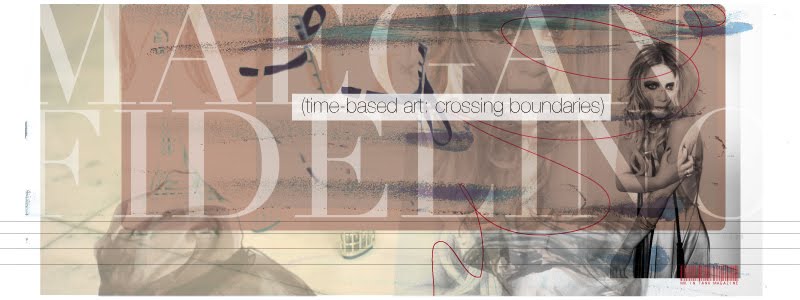Digital Technology and Image-Making:
Looking at Manovich
Image-making and image manipulation through digital technology means has become widely accepted and used for photography and video. In "The Paradoxes of Digital Photography," Lev Manovich discusses whether or not this change has been revolutionary, or instead, filed with numerous paradoxes. The point that I believe to be his strongest relates very well to the process and creation of my projects throughout this course. Moreover, his ideas about photorealism connect very well with the ideas in my final piece, created through digital technology.
Although I have previously delved into digital imaging, this course has allowed me to explore motion and film on a much deeper level. Manovich explains that recently emerged technologies of image-making allow photographs to explore new and still poorly understood functions. Video, and especially stop-motion video have allowed me to look at new ways of image-making. While these are still new to me, digital technology has allowed me to engage with motion images in a very hands-on, accessible way. New technology allows me to "direct" my own video using software packages - a much simpler method than cutting and splicing film strips.
Digital images are not like traditional film-based images. As Manovich explains, they exist as mathematical data comprised of millions of pixels. They contain more information than can be seen with the human eye. With this course, I have explored the image of beauty projected by the media - primarily the fashion magazine. This medium is typically comprised of digital images of women that project a particular ideal. Relating to Manovich, the images, like the ideals, contain more than meets the eye. Through digital imagery, an image of what would otherwise be truthful, honest reality can be easily altered. Manovich observes that traditional film editing and printing techniques are being replaced by digital pores, thereby blurring the lines between production and post-production. The same can be said for photography and print mediums like magazines. There is no definite line between what the original and edited outcomes could have been. As Manovich says, "current technology has already reached the point where a digital image can easily contain much more information than anybody could want." Have we lost a sense of reality in the world of digital? Digital photography can change the essence of what a photograph is. Manovich looks at the inherent mutability of a digital image, which connects very well to the digital altering of images in the world of fashion. Digital technology has allowed information to be changed with the click of a mouse. It is accessible and easy to use, but at the same time, an important question raised is whether or not it becomes too easy. Is it a good thing that the majority of images we see on a daily basis are not accurate reflections of reality? Manovich points out that in the past, photographs were comfortably regarded as absolute truths - reports of reality. Even through the simple means of incorporating stop-motion into my final piece, I am blurring reality. The majority of stop-motion put inanimate objects into motion. I chose to animate the flipping of pages in a magazine. However, a sense of reality is lost because magazines cannot flip on their own.
William Mitchell's "The Reconfigured Eye: The Visual Truth in the Post-photographic era" is often referenced in Manovich's article and makes very interesting points. Manovich critiques his notion of "normal" unmanipulated photography, arguing that digital technology does not alter the principles of photography, but simply adds a new element. Retouched photographs are not completely new. Soviet photography in the Stalinist era published photographs that were very heavily retouched. These images existed at a place between photography and painting. It is possible to also say this about photographic fashion magazine images because of the amount of digital airbrushing and retouching. In both cases, the goal is to project a perfct world ha retains enough of everyday reality to appear truthful. Yet, these new representations of reality show a future that promotes a more attractive society, or a particular approach to beauty. However, as Manovich points out, photography is not meant to point out something specific and concrete, but is simply a visual representation of an idea. There has never been a single way of reading photography - a viewer can see an image as representation or as illustration. Manovich argues ha there is no "normal" photography - realism is not entirely present in photography.
The piece that I have created juxtaposes a stop-motion video of magazine pages flipping with a video of a girl applying makeup. In turn, the viewer can relate these two ideas. Firstly, there is a long process that goes into creating the image in a magazine, and it may not be entirely realistic. Secondly, many women adopt a daily routine that includes applying makeup - a task that may seem strenuous and mundane - but the image that women often try to emulate in a conscious manner or not is that projected by society. Digital technology and my exploration of video and images throughout this course has allowed me to depict and represent ideas in new and different ways. I have not only been able to explore my own use of technology, but I have also looked at how the media has taken these technologies to in turn promote a particular reality - truthful or not.
WORKS CITED
Manovich, Lev. "The Paradoxes of Digital Photography." Photography After Photography (1995).
Lev Manovich. Web. < http://manovich.net/TEXT/digital_photo.html >.


